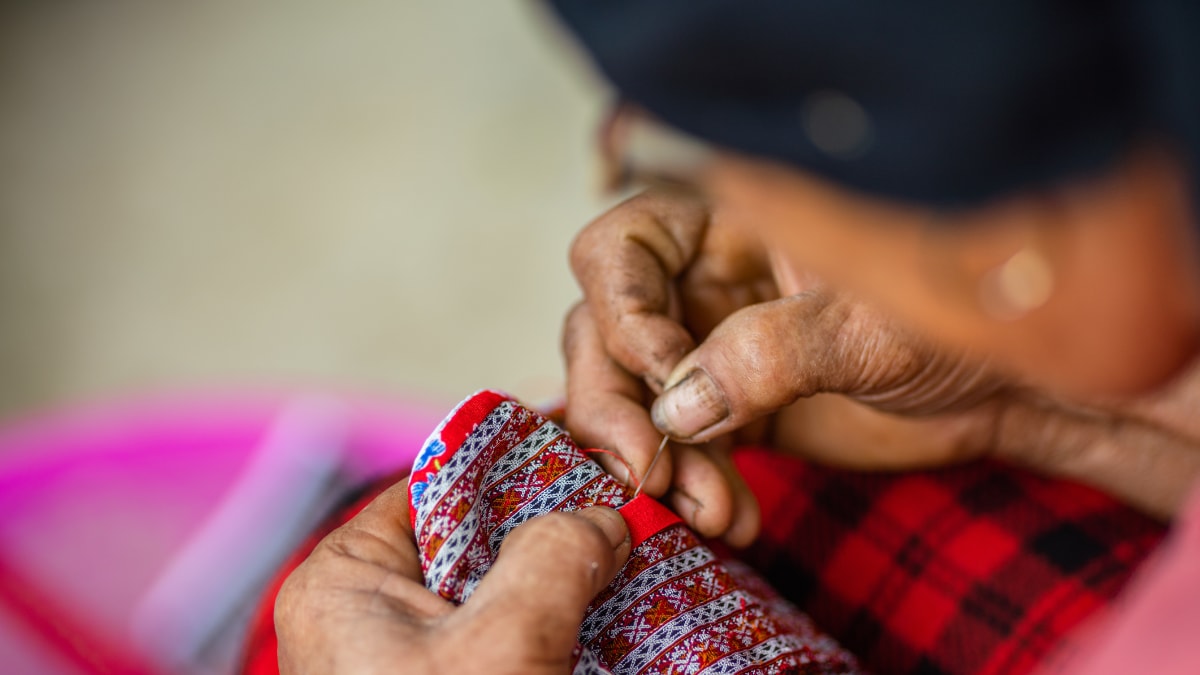4 Benefits of Incorporating Indian Handicrafts and Textiles In Your Daily Life – News18

Traditional Indian handicrafts and textiles bring a sense of authenticity and uniqueness to the marketplace
By preserving our cultural legacy, empowering local artisans, promoting sustainable practices, and enhancing tourism, we can add value to our businesses
India, with its rich cultural heritage, has a treasure trove of traditional handicrafts and textiles that hold immense value, not only in preserving the country’s legacy but also in contributing to modern business imperatives. In an era dominated by mass production and global brands, it is essential to recognize and embrace the significance of these age-old crafts. By integrating traditional Indian handicrafts and textiles into contemporary business practices, we can foster economic growth, empower local artisans, promote sustainable practices, and offer consumers unique and authentic products.
“One of the greatest advantages of embracing traditional Indian handicrafts is the empowerment of local artisans. Many of these craftsmen and women come from marginalised communities, and their skills have been honed over centuries. This enormous cultural and creative capital in the sector can be a huge differentiator in the face of inevitable and rapid changes as a result of transformation fueled by advanced machine-based technologies. Investment in our traditional artisans can help overcome serious concerns pertaining to environmental pollution as a result of machine technologies,” says Asha Patil, Founder, Banjara Kasuti. By providing them with a platform to showcase their artistry and market their products, businesses can uplift these artisans and give them a sustainable means of income. This empowerment leads to economic growth at the grassroots level and helps combat poverty, promoting a more inclusive society.
Traditional Indian handicrafts and textiles have been passed down through generations, representing the diversity and ingenuity of the country’s cultural tapestry. Patil adds, “Embracing and promoting these crafts helps preserve India’s heritage and ensure that ancient techniques, designs, and skills are not lost in the march of progress. By incorporating these traditional elements into modern business models, we can create a bridge between the past and the present, providing a living testament to our rich cultural legacy. The handloom and handicraft sector in India is estimated to be the second largest employment generator in our country after agriculture.”
In a world grappling with environmental challenges, embracing traditional Indian handicrafts and textiles can offer a more sustainable alternative to mass-produced goods. “Most traditional crafts are created using organic materials and follow eco-friendly production processes. For instance, natural dyes derived from plants are used in textiles, minimising the environmental impact caused by synthetic dyes. Additionally, many crafts employ recycling and upcycling techniques, reducing waste and promoting a circular economy. Integrating these sustainable practices into business imperatives not only helps protect the environment but also appeals to the growing conscious consumer base,” opines Patil.
Traditional Indian handicrafts and textiles bring a sense of authenticity and uniqueness to the marketplace. In a world saturated with mass-produced goods, consumers are increasingly seeking products that tell a story and have a personal touch. By embracing these traditional crafts, businesses can offer customers products that have a distinct identity, reflecting the rich cultural heritage of India. This differentiation can be a valuable marketing tool, attracting discerning consumers who appreciate the craftsmanship, history, and cultural significance associated with traditional Indian handicrafts and textiles.
“Banjara Kasuti, an organisation started with a vision to empower the Lambani women in Karnataka, prioritises embracing tradition in their embroiderers, product designs and patterns. By discovering business value in a decades old art form of the Lambani ladies, the initiative is now making these available for people all across to experience,” believes Patil.
Incorporating traditional Indian handicrafts and textiles into modern business imperatives is a win-win situation for all stakeholders involved. By preserving our cultural legacy, empowering local artisans, promoting sustainable practices, offering unique products, and enhancing tourism, we can add significant value to our businesses. It is imperative that we recognize the potential of these age-old crafts and make conscious efforts to integrate them into our contemporary lifestyles. Only through such embrace can we ensure the survival and prosperity of traditional Indian handicrafts, enriching our lives and contributing to a more vibrant and inclusive society.
For all the latest lifestyle News Click Here


